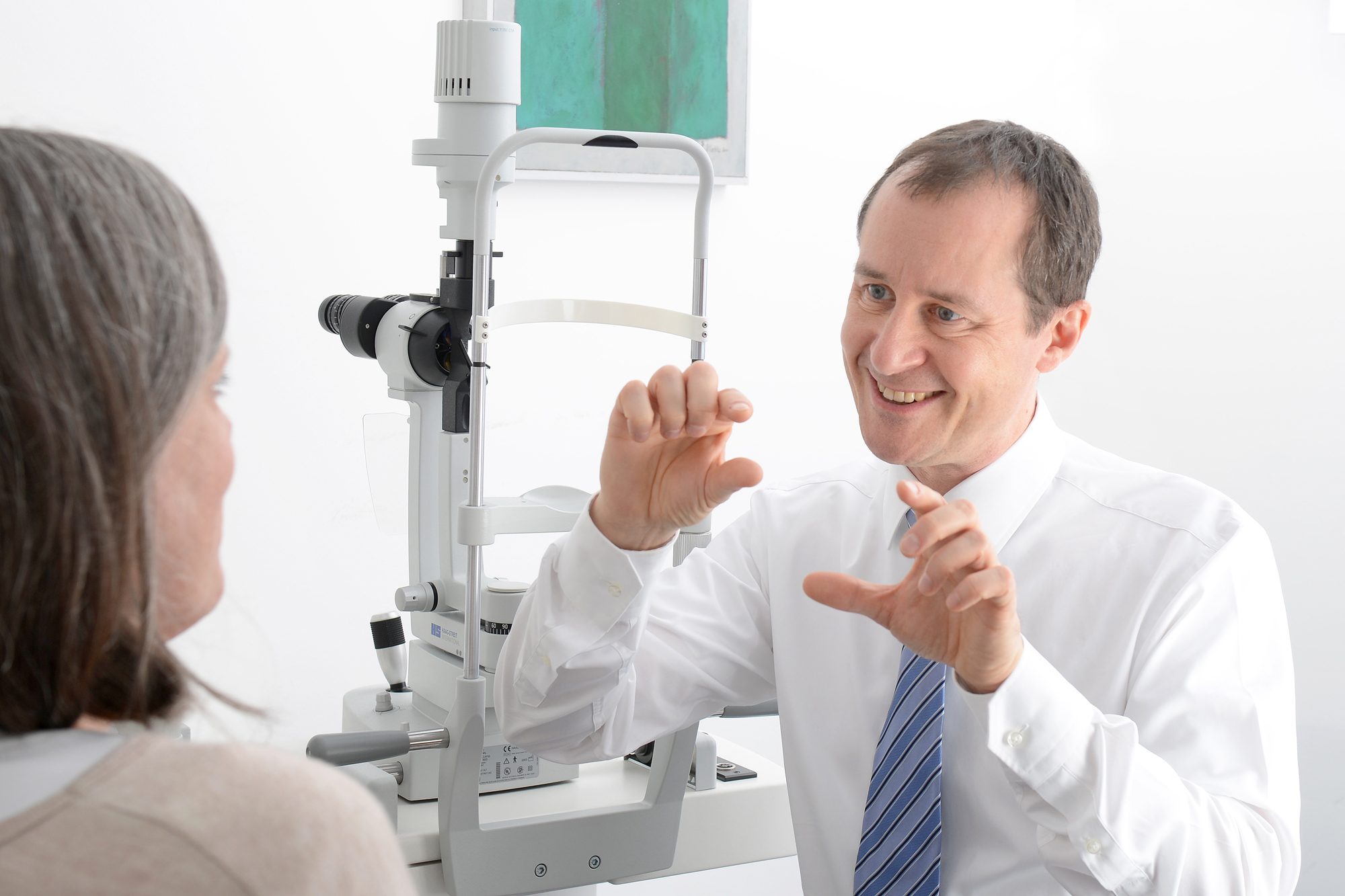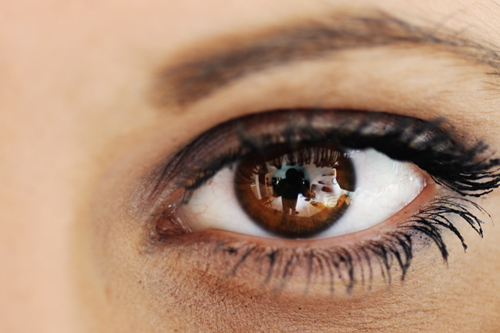Special advantages of SMILE
With the development of SMILE, a method became available that has increasingly established itself as a further treatment method: The advantages of this generation of laser surgery are that there are no flap-related complications or side effects. The access cut, which is only approx. 3.5 mm in size, allows minimally invasive treatment, resulting in rapid regeneration of visual acuity.
- Ideal for short-sighted people.
- Optimal for dry eyes or contact lens intolerance.
- SMILE is minimally invasive.
- No flap-related complications.
The individual steps of SMILE
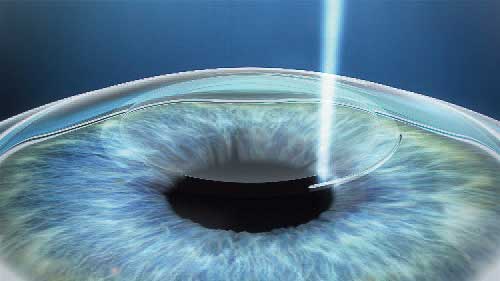
Step 1
With the special femtosecond laser VisuMax from ZEISS, a refractive lenticule as well as a small incision in the intact cornea are first made in one step.
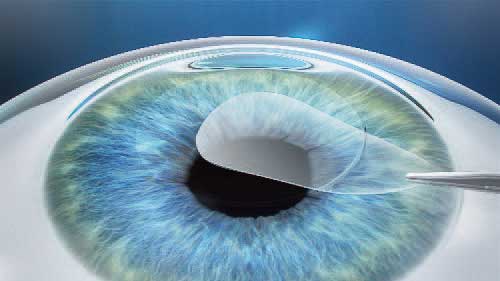
Step 2
In the second step, the lenticule is removed through the incision. Since no flap is cut, this is only a minimal intervention in the biomechanics of the cornea.
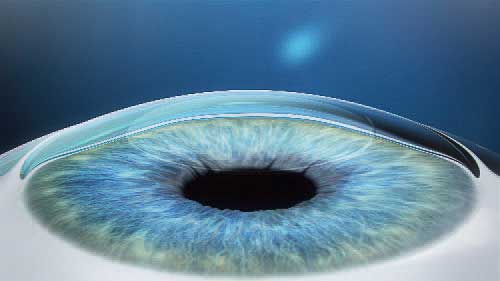
Step 3
The removal of the lenticule changes the cornea in such a way that the desired refraction change is achieved.
What are the advantages and disadvantages of SMILE?
„The advantages of SMILE: Minimally invasive and low side effects.“
Stephan Münnich, MD
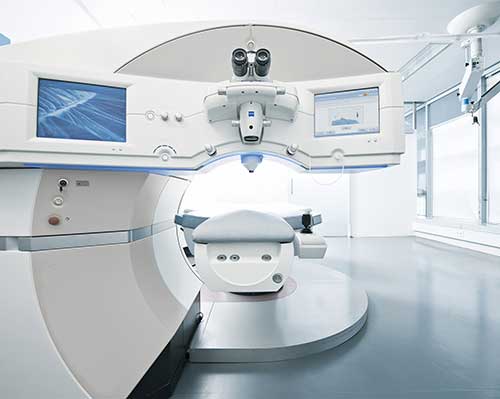
SMILE is a further development of LASIK: A femtosecond laser produces a refractive lenticule within the cornea, which is removed via a tiny incision, also made with the laser. This minimally invasive procedure has even less impact on the biomechanical stability and sensitivity of the cornea. Since September 2016, the SMILE procedure has also been officially approved by the FDA in the USA.
Three million SMILE treatments have already been performed worldwide. After PRK and LASIK, Small Incision Lenticule Extraction or SMILE has established itself as the 3rd generation of refractive laser surgery. It is a minimally invasive, flapless procedure that combines the advantages of the two previous generations.
The SMILE keyhole technology goes one step further than Femto-LASIK: laser eye surgery becomes even safer and more gentle. Only a tiny laser opening is required to prepare a 3D disk (lenticule) inside the cornea (stroma) and remove it through this "keyhole". This lenticule corresponds in volume and shape to the amount of tissue of your defective vision to be corrected.
The stability of the cornea is maintained and the production of the tear film is not disturbed.
SMILE is therefore also suitable for patients with dry eyes or contact lens intolerances. At present, this procedure can only be used for myopic patients with and without corneal curvature (astigmatism).
Laser Clinic
LOHR
Partensteiner Str. 6
97816 Lohr am Main
0 93 52/ 60 214 20
WÜRZBURG
Domstr. 1
97070 Würzburg
09 31/ 32 930 930
Ophthalmic practices
LOHR
Partensteiner Str. 6
97816 Lohr am Main
0 93 52/ 60 214 10
WÜRZBURG
Domstr. 1
97070 Würzburg
09 31/ 32 930 939
MARKTHEIDENFELD
Luitpoldstr. 31
97828 Marktheidenfeld
0 93 52/ 60 214 10
KARLSTADT
Gemündener Str. 15-17
97753 Karlstadt
0 93 52/ 60 214 10
HAMMELBURG
Berliner Str. 21a
97762 Hammelburg
0 97 32 - 43 31
Surgical centers
LOHR
Partensteiner Str. 6
97816 Lohr am Main
0 93 52/ 60 214 12
WÜRZBURG
Domstr. 1
97070 Würzburg
09 31/ 32 930 939
MILTENBERG
Regional partial professional association
Hauptstr. 21
63897 Miltenberg
0 93 52 / 60 214 12
BUCHEN
Regional partial professional association
Dr.-Konrad-Adenauer-Str. 37
74722 Buchen
0 93 52/ 60 214 12
FURTHER LINKS:
www.augen-lohr.de
www.augenlaserzentrum-lohr.de
Quick contact
E-MAIL
info@augen-lohr.de
Phone
Laser Clinic
0 93 52 / 60 214 20
Ophthalmic practice
0 93 52 / 60 214 10

